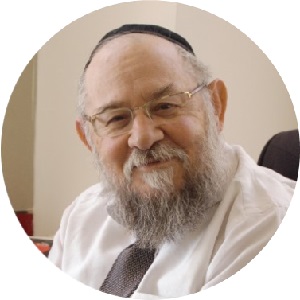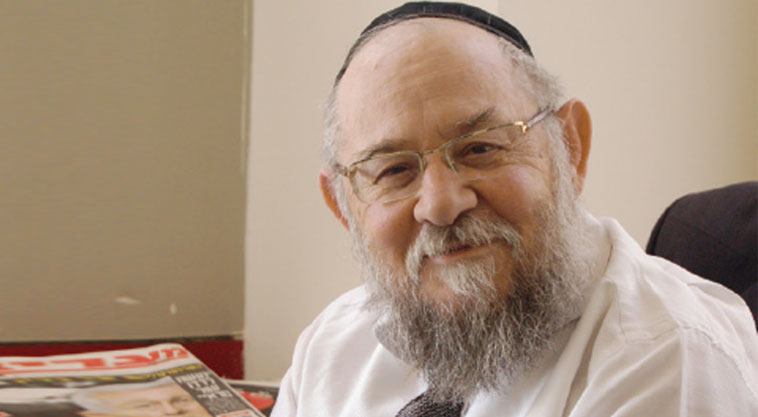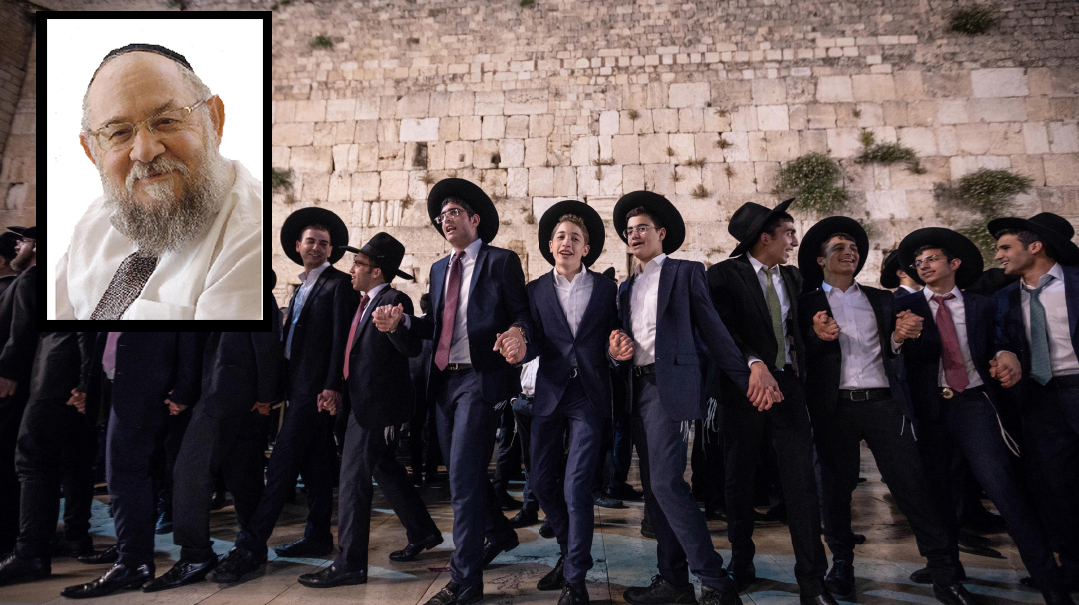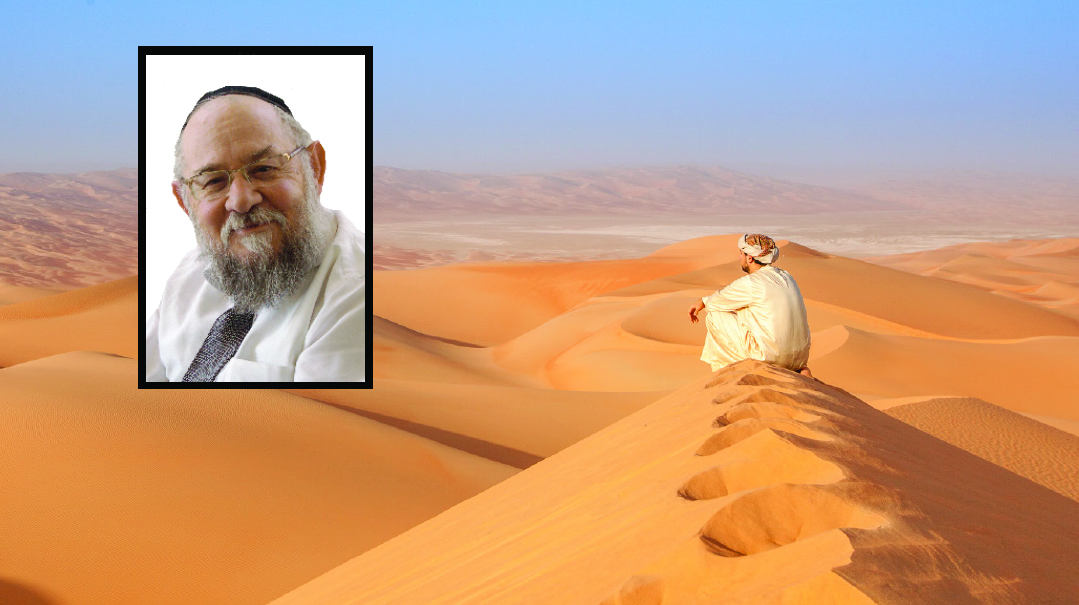For the Sake of Heaven


T rue over the centuries the Jewish People has had its share of major debates that pitted communities and even families against each other. But difficult as those conflagrations were they all related to how to properly serve Hashem not to reject His existence. Today it’s become a denial of the essence.
My friend and I parted ways last Thursday night by the Kosel after another round of discussion and a seemingly endless series of dead-end conversations. I felt more sorry than annoyed.
Our conversation as you might have guessed was about Reform Jewry’s attempt to take a piece of the Kosel for themselves; yet my friend was adamant in his unwillingness to understand why we the Torah-observant community insist on preventing them from doing so.
“Gadol hashalom ” he quoted to me claiming that it is we who are causing a rift in the Jewish People. “Live and let live ” he said. “Why should it bother us?” he continued. “Let everybody pray the way they want to” — and all the rest of the clichés that surround us.
THAT NIGHT I WAS SAD. I’ve known my friend for many years and I know him to be a young man of honesty and integrity so I can only conclude that he genuinely does not understand the crux of the disagreement between Torah-true Jewry and other organizations whose faith is not based on Torah miSinai. And he has no idea how deep is the chasm that separates us.
I explained how this is just one more dispute in a long history of disputes that have arisen among religious Jews over many centuries. He tried to cut me off in the middle of my explanation bringing up the machlokes between Beis Hillel and Beis Shammai the machlokes between the chassidim and the misnagdim the disagreements within the chassidic movement as well. He mentioned Breslov the opposition to Chabad and the struggle between Rav Sonnenfeld and Rav Kook.
But then it occurred to me: When he was listing all those machlokos that arose throughout the generations why didn’t he mention the most famous one of all the machlokes of Korach and his cohorts? Why not? Was it because Moshe Rabbeinu was the clear winner of that dispute and the earth swallowed up his opponents? Why actually did the sacred ideal of “live and let live” not apply in that case? Because back there in the Wilderness the disagreement wasn’t about the correct way to understand Hashem’s Torah; it was a denial of the very essence of the Torah as given at Sinai. And what is the basis of the Reform movement whose right to the Kosel he so ardently defends?
Why didn’t he mention the dispute between the Rambam and the Karaites and the fact that the Rambam was determined to push them out of the Jewish nation? Did the Rambam forget the klal gadol of “live and let live”? What about the Perushim vis à vis the Tzedukim or vis à vis the early Christian sects that separated from normative Judaism? Of course one clearly sees that these movements were disputing matters that are essential to the Jewish People and the Torah handed down to us from Sinai; even a most liberal position understands that these groups have put themselves out of the realm of the Jewish faith.
Yet for so many like my friend the definition of authentic Judaism stretches to accommodate the Reform movement — not chas v’shalom that the movement’s adherents are not authentic Jews but can their philosophy be defined as authentic Judaism when it denies the very basic tenets of our faith?
THE DISPUTE BETWEEN the Vilna Gaon and the chassidim for example was not a dispute about whether the Torah is of Divine origin or just an ingenious body of folklore. It was a dispute about which is the right and proper way of fulfilling the Divine Torah in our individual and communal lives. Is this the dispute of the Reform movement? Did the movement not challenge the entire concept of the Divine origin of the Torah? (Even the Tzedukim and Kara’im did not deny the Divine origin of the Torah rather they distorted the concept each in its own way.)
“If for argument’s sake we accept your claim that we are causing a rift in the Jewish nation then according to your learned opinion Rabbeinu Saadya Gaon and the Rambam were the biggest rift makers of all when they excluded the Kara’im — who at certain times constituted a majority — from the Jewish nation ” I told my friend. “Do you accuse them too of destroying the unity of the Jewish People? Or was it perhaps the Kara’im the Tzedukim and the Notzrim who were the ones who broke away? What has Reform contributed to the Jewish People aside from shocking percentages of intermarriage and assimilation? Don’t fall into the honey trap of their claim that not accepting them as a legitimate stream of Judaism will cause Diaspora Jewry’s bonds with Israel to be cut. First of all the majority of non-observant and non-traditional Jews in America are in fact unaffiliated with any movement. And please remember that no one is saying Reform Jews are not genuine Jews — we’re not invalidating them but we cannot accept their movement as authentic Judaism.”
I repeated to my friend a story I’ve told here before: I happened to be in Sao Paulo Brazil when Rabbi Yisrael Meir Lau who turned 80 this year after decades of public and rabbinic service came to visit that city. He had asked all the local Orthodox rabbis to meet with him and the clergyman of the Reform community also came uninvited. Rav Lau asked that the uninvited visitor leave before he would start the meeting. The clergyman was understandably enraged and humiliated as he left the conference room.
Later a delegation representing the Reform community requested to meet with Rav Lau. He was happy to agree and at the meeting they expressed their resentment of the fact that their clergyman had been banished from the rabbinical conference. “Do you think we aren’t Jews?!” they asked. Rav Lau answered “Chas v’chalilah! Of course you are all good and precious Jews! It’s just that your leaders are leading you astray and taking you off the derech! They’re deceiving you with a false representation of Judaism and pulling you away from your true connection with the Jewish People.” He went on to explain in his articulate way that Orthodoxy’s rejection of the Reform outlook was not at all a rejection of them or a repudiation of their status as Jews.
I escorted the Rav who is an old friend from my yeshivah days back to his hotel room and waiting there was a huge flower arrangement with a warmly worded card from the members of the Reform congregation attached. His assurances that we are all brethren touched them deeply. They now realized that it was their religious leaders who had sold them the false notion that their Orthodox brothers had excommunicated them.
“Do you see what is happening my friend?” I pleaded. “Once again the leaders of the Reform movement are trying to poison the souls of their congregants with their divisive propaganda. What do these Reformists really want when they demand recognition at the Kosel? Do they even have a right to speak in the name of pluralism enlightenment equality and moderation to toss off nice-sounding slogans like ‘Live and let live ’ with a big smile on their faces? I for one will not fall for the show.” (Originally featured in Mishpacha Issue 676)
Oops! We could not locate your form.




